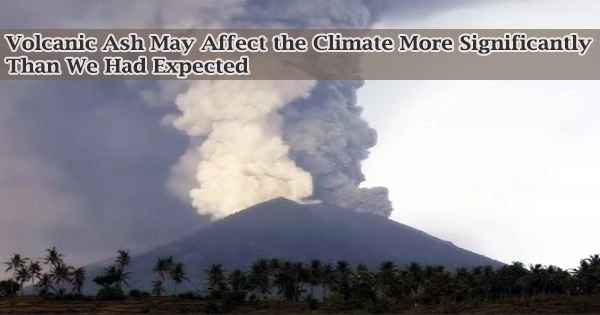When volcanoes erupt, these geological giants send up enormous clouds of ash and dust that can blacken the sky, halt air travel, and rise up to around 25 miles above the surface of the planet.
According to a recent study done by the University of Colorado Boulder, such volcanic ash may also have more of an impact on the planet’s climate than previously thought.
The most recent study, which was released in the journal Nature Communications, examined the Mount Kelut (or Kelud) eruption that occurred in 2014 on the Indonesian island of Java. The scientists learned that volcanic ash appears to be prone to loitering in the air for months or even longer following a significant eruption by using actual observations of this event and cutting-edge computer simulations.
“What we found for this eruption is that the volcanic ash can persist for a long time,” said Yunqian Zhu, lead author of the new study and a research scientist at the Laboratory for Atmospheric and Space Physics (LASP) at CU Boulder.
Lingering ash
The discovery was made by accident as members of the research team were flying an unmanned aircraft close to the site of the Mount Kelut eruption, which resulted in the evacuation of many residents of Java and the blanketing of the island in ash. While doing so, the aircraft discovered something that wasn’t supposed to be there.
“They saw some large particles floating around in the atmosphere a month after the eruption,” Zhu said. “It looked like ash.”
She stated that it has long been known by scientists that volcanic eruptions can have a negative impact on the climate of the globe. Large quantities of sulfur-rich particles are launched into the Earth’s atmosphere during these outbursts, where they can prevent sunlight from reaching the ground.
Researchers have assumed that ash is similar to volcanic glass. But what we’ve found is that these floating ones have a density that’s more like pumice.
Yunqian Zhu
However, scientists haven’t really considered how much ash might contribute to that cooling effect. Scientists hypothesized that because these rocky fragments are so heavy, they most likely fall out of volcanic clouds shortly after an eruption.
Zhu’s team was curious as to why Kelut’s situation was different. The scientists found that the volcano’s plume appeared to be teeming with small and lightweight ash particles, presumably capable of floating in the air for extended periods of time, much like dandelion fluff, based on aircraft and satellite images of the developing tragedy.
“Researchers have assumed that ash is similar to volcanic glass,” Zhu said. “But what we’ve found is that these floating ones have a density that’s more like pumice.”
Disappearing molecules
Additionally, these pumice-like particles appear to change the chemistry of the entire volcanic plume, according to study co-author Brian Toon.
Toon, a professor at the University of Colorado Boulder’s LASP and Department of Atmospheric and Oceanic Sciences, explained that erupting volcanoes spew out a lot of sulfur dioxide.
Many scientists previously believed that those molecules engaged in a series of chemical reactions that, in theory, may take weeks to complete before they converted into sulfuric acid. However, observations of actual eruptions indicate that it occurs far more quickly than that.
“There has been a puzzle of why these reactions occur so fast,” Toon said.
He and his colleagues think they’ve discovered the answer: The sulfur dioxide molecules appear to adhere to the airborne ash particles. During the process, they might experience chemical reactions on the ash’s surface, potentially sucking in as much as 43% more sulfur dioxide from the atmosphere.
Ash, in other words, may hasten the transformation of volcanic gases in the atmosphere.
It’s unclear exactly what effect the ash clouds are having on the climate. After an eruption, lingering particles in the atmosphere may darken the planet and perhaps contribute to its cooling. Additionally, floating ash may blow all the way to the planet’s poles from locations like Kelut. There, it might initiate chemical processes that harm the planet’s vital ozone layer.
But the researchers say that one thing is clear: It might be time to pay much more attention to all that ash and its actual effect on the climate of Earth when a volcano erupts.
“I think we’ve discovered something important here,” Toon said. “It’s subtle, but it could make a big difference.”
















